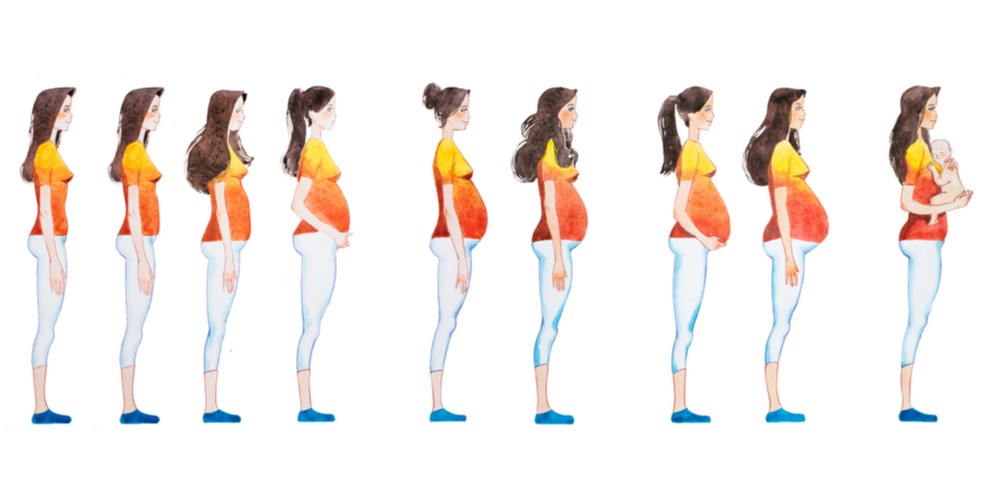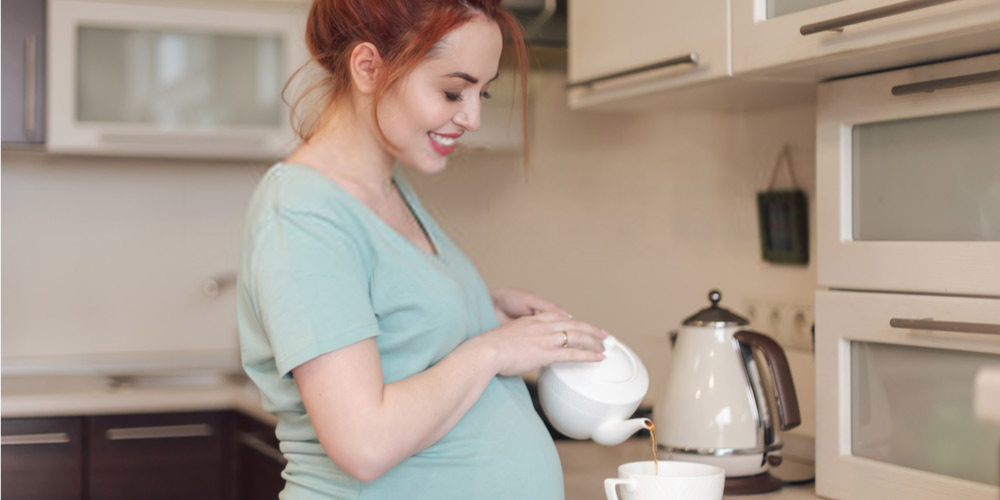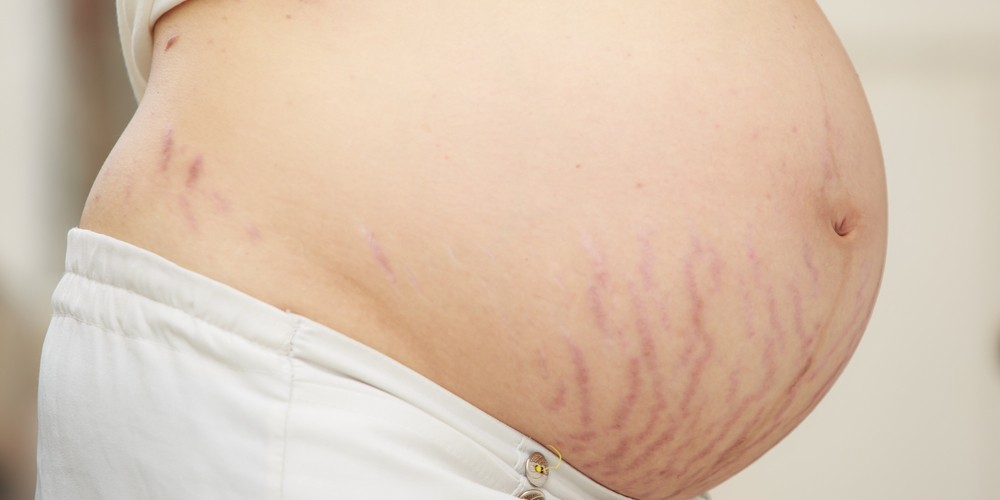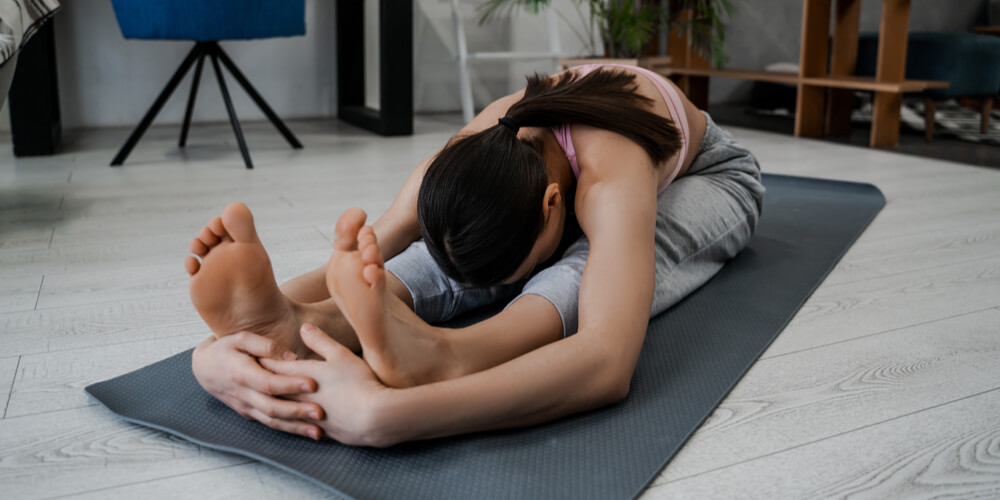
For the females who are experiencing their first pregnancy, this will be no less than a roller coaster ride for you. The initial weeks will make you sick and your body exhausted. But it is not that scary anyway, our mom’s went through the same. It all gets better and under control as you start adjusting to the changes and molding yourself according to it. You have to keep in mind that you are no longer alone, you have a baby developing and growing inside you. All that you do, eat, think, and feel, your baby feels the same.
A female usually gets to know if she is pregnant when she misses her period or multiple of them. A skipped period does not always mean that the female is pregnant. The female can often feel other symptoms of pregnancy before even she realizes a missing period. But it is a known fact that some women experience many symptoms in their early pregnancy while others don’t experience such symptoms.
During pregnancy, a female experiences overwhelming excitement and happiness as a new life develops and grows inside her body. She can also experience uncomfortable physical and psychological symptoms and may have mood swings, moments of fear, anxieties, etc during this new and vulnerable stage of her life. Such things are more common during the first pregnancy of the female. To reduce the risk of complications, the new mom-to-be should indulge herself in proper prenatal care and strictly avoid drugs which can be dangerous.
This is your know it all guide for pregnancy. Read ahead to know all about the stages, physical, psychological and changes with intimate parts and life and in the end, how to get your body back on track after childbirth.
Table of Contents
The 3 Trimesters of Pregnancy
Pregnancy is a constant process of nine months involving many changes in the body and psychology of the female. A female’s body system, functioning, and appearance completely change during pregnancy and after childbirth. Apart from that, there are doctor visits, lifestyle changes, social changes, and emotional changes. Pregnant females often have many questions as they wish to learn as much as possible about what all do they have to expect, what is considered as normal during the phase and what all they can do to protect her infant and how to maintain the best health for a healthy pregnancy.

First Trimester of Pregnancy ( 1-12 weeks )
During the first trimester, the female’s body undergoes various changes. Hormonal and psychological changes are the first to kick in and affect many organ systems in the body. Such changes can escalate other symptoms even during the first weeks of pregnancy. The period stopping is a clear sign that one is pregnant. Other such bodily and psychological changes include:
- Tiredness
- Tender and swollen breasts. The nipples also might stick out.
- Frequently upset stomach which may be accompanied by morning sickness
- Cravings for various foods
- Frequent mood swings
- Constipation
- Urinating more frequently
- Mild or severe headache
- Heartburn or burning sensation
- Spontaneous weight gain or loss
As the female’s body changes, she might feel the need to make changes to the daily routine, like taking more rest, going to bed earlier, eating more often, taking frequent but small meals, etc. Most of such complications and discomforts generally go away as the pregnancy progresses. Some females might not feel any such symptoms or discomfort at all while some may face a hard time with them. If the female has been pregnant before, she might feel differently the next time she is pregnant. Just like each woman is different, so is the pregnancy for each one.
Second Trimester ( 13-28 weeks )

Most females consider the second trimester of pregnancy easier as compared to the first one. It is essential to stay informed about pregnancy during all stages. Know what is normal and what is not. You should be able to differentiate the common symptoms and other signs. Consult your gynecologist as soon as you experience abnormalities.
Some females may notice that they no longer are experiencing symptoms such as nausea and fatigue. And instead, they begin to experience several more noticeable changes occurring. The abdomen can be felt expanding as the baby continues to grow. And during this trimester itself, the female can feel that the baby has begun to move.
The pregnant woman’s body would begin to make room for the growing baby. At such point, the female would start noticing several new complications and changes in the body including:
- Frequent Body ache including backache, abdominal pain, groin, or thigh pain
- Stretch mark would begin to appear on the abdomen, breasts, thighs, or buttocks
- Dark skin around the nipples
- A line appears on the skin running from the belly button down to the pubic hairline.
- Patches of dark skin over the cheeks, forehead, nose, upper lip. This is popular as the “Mask of Pregnancy”.
- Numbing or tingling of hands. This is medically known as “Carpal tunnel syndrome”.
- Itching on certain parts such as the abdomen, hands, and soles of the feet.
- Swollen and puffy ankles, fingers, and face.
Third Trimester ( 29-40 weeks )

The mom-to-be feels as if she is in the home stretch! Some discomforts experienced in the second trimester would continue in the last trimester too. There are some women who face breathing in difficulty and have to go to the bathroom even more than usual. This happens as the baby is getting bigger and bigger and that is putting more pressure on the organs, especially the parts under the lower abdomen and the lower body. Some new body changes that the female might notice in the third trimester are:
- Difficulty breathing and shortness of breath
- Burning sensation and heartburn
- Swollen ankles, fingers, and face.
- Hemorrhoids
- Tender breasts
- The belly button may appear to stick out
- Discomfort while sleeping, which may even lead to insomnia
- The feeling of baby dropping, or moving in the lower abdomen
- Pre-labor contractions, or false labor alarm
As the due date gets closer, the cervix will become thinner and softer, which is called effacing. This is completely normal and a natural process that helps the vagina to open wider during childbirth.
8 ways in which Pregnancy changes the female’s body

1. Wider hips
Many females are of the opinion that their hips got wider. Actually, it is the pelvic bone’s structure that is changed. During pregnancy and the time when the baby passes through the birth canal, it changes the bone structure to some extent. As a result, the female may realize that her hips get wider and her clothes fit differently. Some females do not observe any such difference but others do. This factor varies from female to female.
2. Bigger feet
It’s normal for a female’s feet to swell up during her pregnancy. But some new mom’s can actually feel that their feet have gotten larger than before after giving birth. Some females even say that they can feel that their shoes fit differently after childbirth. This factory generally goes away after a few months of delivery. But for some females, they have to go a size up in their footwear for the rest of their lives.
3. Smaller or larger boobs

Some females may feel that their breasts have gotten deflated after giving birth, even if she is breastfeeding. So basically, the breasts bulk up during pregnancy due to overall weight gain. In some cases, the loss of fat under the skin of the breasts can give a sagging or drooping appearance to the breast tissue.
But a female can stay with bigger boobs even after childbirth. Approximately one-third of females end up having smaller breasts. But, on the other hand, about one-third of the females end up having larger breasts even after childbirth.
Also Read- Breast Pain In Pregnancy
4. Darker areola, labia, and moles
The breast size is not the only thing that changes. The usual color of the areola and nipples may get darker in shade during pregnancy. They may even stay darker even after having the baby. This can also happen for the labia and even moles on any part of the body. This is caused due to the high levels of estrogen in the female during pregnancy.
5. Melasma
Melasma, also popular as the “mask of pregnancy,” is a condition that leads to the formation of brown spots on the face. This is common in females during their pregnancy. The darkening of the skin of the face usually goes away within one year, but for some females, it may never completely fade away.
6. Limp hair
The hair and nails tend to grow pretty well during pregnancy. But there can be vigorous loss of hair due to certain hormones after childbirth. As a result of that, the female can feel limp and lifeless. This factor is usually temporary and gets back to normal after about one year of childbirth.
7. Stretch marks

Stretch marks often fade away after a certain period of time, generally a few months to one or two years after childbirth. But generally, such stretch marks stay for life and don’t fully disappear. The key factor here is a large amount of weight gain during pregnancy which makes the female more prone to developing such stubborn stretch marks. The female can get rid of the weight loss with the Stretch Marks Removal Treatment.
8. A stressed-out personality
Hormonal and physical changes in the body and system of the female during pregnancy can influence how the brain works and reacts. This is the reason that the mom-to-be already starts developing emotions of motherhood. It also results in an increase of emotions and sentiments like parenting and motherhood and a decrease in feelings of sexiness, erotic behavior, and intimacy. But this is mostly considered and seen as a temporary phase. It may take some time to get back to your sex life but will eventually get back on track and both the partners would usually rebound after childbirth.
It has been observed that such changes do not happen to everyone during their pregnancy. It’s unlikely that a female would experience all of them, even most of it. The tougher the pregnancy is, the more complicated and vigorous the symptoms and effects are.
Also Read- Post Pregnancy Depression
What Are the Possible Complications During Pregnancy?

- High-risk Pregnancy: A female considered more prone to complications during pregnancy is classified a high risk pregnancy. For example, a female who is pregnant and is having diabetes or high blood pressure runs at high risk of complications during her pregnancy. Other complications can occur in women such as teenagers who are too young or females who are over the age of 35, or the females who have been treated for infertility earlier.
- Ectopic pregnancy: Ectopic pregnancy is the case of pregnancy in which the egg results in implanting someplace else other than the uterus, usually the fallopian tubes. Such a complication can be life-threatening to both the female and the infant. Ectopic pregnancy should be diagnosed earlier in order to avoid damage to fallopian tubes. Early diagnosis and treatment of this condition are also essential to prevent maternal illness or death. It is also called a tubal pregnancy.
- Cervical Incompetence: During this condition, the cervix of the female begins to widen or thin even without contractions before the pregnancy. The condition of cervical incompetence can also be a result of a mid-pregnancy miscarriage.
Also Read- Recurrent Pregnancy loss or Multiple Miscarriages - Preterm Labor: In the condition of preterm labor, the uterus of the female begins to contract even before the baby has reached full growth.
- Preeclampsia or Eclampsia: Preeclampsia is a disease that can affect several different organs of the system. Vascular effects can cause a rise in blood pressure in the case of a pregnant female. The condition can also cause damage to the kidneys, swelling, hyperactive reflexes, and deleterious abnormalities in the blood and nerve reflexes. If not treated in time, preeclampsia can lead to eclampsia, which is a serious condition that may cause seizures, coma, and even death.
Also Read: POST-CHILDBIRTH COMPLICATIONS
Impact of Pregnancy and Childbirth on the Vagina
Vaginas deserve great applause! They are such self-cleaning organs that can deliver both pleasure and babies. But delivering a child can literally transform the vagina. Pushing a tiny baby out of the tiny vaginal hole has a huge impact on the vagina. In most cases, the effects go off and the female’s body and vagina get back to normal in a few months after the delivery. But some might need medical attention to treat their conditions.
The vagina changes after childbirth. It might feel loose and wider, dry, itchy, sore for some time. At the time of childbirth, the baby passes through the cervix and then comes out from the vagina. This is why the vagina is called the birth canal. The entrance to the vagina stretches to a large extent which allows the baby through. At times, the perineum skin, which is located between the vagina and anus might tear or may be cut by the doctor itself to make more space for the baby to come out. This procedure is called an episiotomy. After childbirth, it’s usual for women to feel that their vagina has become more loose, itchy and dry than it was earlier. Many females also complain about perineal pain or pain during intercourse, urinary leakage, itching, pain while urinating, etc. Below are mentioned the common possible ways in which a female’s vagina is changed after delivering a baby:
- The vagina that feels wider, and more open- The vagina might look and feel wider than it was before. The vagina may also feel more loose and softer. The vagina may also look and feel bruised and inflamed, which is normal. The swelling and wideness generally start to reduce within a few days after the delivery of the baby. The vagina probably does not return back to completely to its shape and texture as it was before childbirth. New mothers are recommended to start pelvic floor exercises and Kegels to restore the natural shape of the vagina faster and more effectively. Pelvic floor exercises or Kegel exercises can effectively help to tone the vaginal muscles and the pelvic floor muscles. This also helps prevent urine incontinence, which is a common problem after childbirth. Such exercises can also help the vagina feel firmer again. The exercises can also help reduce pain during intercourse and also make sex feel better.
- Urinary Incontinence – After giving birth, the female might still have trouble controlling her urine, which is often called Urinary Leakage. Most women can get back the good control over their bladders about a year after childbirth. But for women with the case of multiple childbirths or giving birth to very large babies or twins or so, the effect is a little long-lasting with more problems. The problem of urinary leakage can be very embarrassing and unpleasing for females. Females facing such problems are suggested to try floor or pelvic exercises or kegel exercises to get the situation under control. If this does not happen and the problem begins to increase, consult your gynecologist. With the laser vaginal tightening, the females can get a tight vagina, get rid of laxity and put an end to the problem of Stress Urinary Leakage.
- Dryness in the vagina- It is normal if you notice that your vagina now feels drier than it was before childbirth. This is a factor associated with the fall in levels of estrogen in the body as compared to during the pregnancy period. During breastfeeding, the estrogen level falls down even more than earlier which causes more dryness. After the female has stopped breastfeeding and her period cycle gets back to normal, the estrogen level reverts back to the way it was before pregnancy. The vaginal dryness will decrease and the natural pH balance would be restored. Sex may also cause pain due to extreme dryness down there. You can try using lubricants at that time. Also, it is suggested to use water-based condoms.
- Soreness in the vaginal and perineum area- The vaginal area causes intense pain and feels very sore. This causes more trouble especially right after childbirth. The condition seems to improve after about 6 to 10 weeks after childbirth. Kegel exercises and pelvic floor exercises are suggested here too as they can help to make the situation a little better in this case. Even the perineum can feel itchy, sore and dry. Maintaining intimate hygiene and keeping the perineal area clean is very important for healthy recovery. Even if you do not have stitches on the perineal area, still make sure that you keep it clean and dry. Make sure to always wash hands before and after changing sanitary pads. Change your pads as often as needed. Take a warm shower each day to keep the perineum healthy and clean.
- Pain during sex- There’s no correct time to start having sex again after childbirth. Do not rush to it, your body needs time to adjust to the changes after childbirth. If the sex hurts, it will not be of any pleasure to the female. If the vagina feels dry, try using a lubricant during sex to check if that helps. If you still have discomfort, it might be a good idea to consult your gynecologist to check on that.
Get your Body back after Childbirth
The whole journey of pregnancy, till delivering the baby, is very difficult, way more than it feels. If you have overcome that, successfully delivered a healthy baby, losing some extra pounds and getting a flat belly is not an impossible thing for you. Give your body some rest after childbirth before indulging in weight loss routines. It can all be achieved if you really want to.
It is your body, you can change it or transform it any way you want. You will find all the helpful exercise routine and diet, specially designed for new moms. Pregnancy and childbirth are different for every female. So is every new mom’s body. Doctors suggest waiting for four to six weeks after childbirth to start any workout or physical activity.
If there are complications like headache, stomach ache, bleeding, soreness, nausea, etc, do not start workouts before getting a professional consultation. Make sure you discuss with your gynecologist before adapting to any such diet or lifestyle changes.
Easy and Effective Exercises for new Moms to Lose Weight and Get a Fit Body

- Walk- Start with baby steps. Begin your weight loss schedule with walking. Take small walks every day. The best time to do that would be early morning or evening. Dusk and dawn are optimum for walks. Stay gentle on your body. Do not push yourself over the limit. You can start with ten minutes of walk, to begin with. Keep on increasing the time as you feel comfortable. You can also walk in a zig-zag pattern for a while for better muscle activity.
- Abdominal Contractions- This exercise is so simple and easy that any woman can do it, even after two or three days after normal childbirth. It is equally effective and helpful. The exercise helps in relaxing the muscles and strengthens and tones the abdomen and belly area. To begin with, the workout, sit in a comfortable place, preferably a yoga mat or soft mattress. Hold and contract your abdomen and abs while breathing deeply, in and out. Start with a few seconds and keep on increasing the time as it gets comfortable. Avoid this workout if you are having heavy bleeding or abdominal pain or cramps.
- Head and shoulder lift with deep breathing- These three movements have been clubbed together to form a toned belly and abs, strong back and burn calories. This exercise helps relieve slight back pain. Avoid if you are having extreme backache. Carefully follow the steps to the workout. Firstly, lie down on a soft surface while bending your knees and feet on the ground. Lift your head and neck while exhaling and relax with head down on the ground while inhaling. After doing that, repeat the same with the shoulders instead of the head. Remain to lie in the same, relaxed posture. Do not over-do. Take rest if it hurts.
- Pelvic Tilt- This is a very effective workout to tone the abs and hips and lose those extra pounds along with relaxing the body and relieving pain. Lie above the ground with all toes and hands touching the ground. Keep your back relaxed and straight. While inhaling, pull your hips back while rotating the hip bone upwards. Hold for three seconds in that position. Repeat three to four times.
- Kegel Exercises- Kegel exercises are always helpful in toning the abdomen area and sides along with losing belly fat. Kegel also helps reduce the risk of SUI which is common after childbirth. This exercise is aimed to contract and hold the vaginal muscles. It is generally difficult for beginners. But as the female keeps on doing it, she gets used to it and it becomes easier for her.Also Read- Benefits of Kegel Exercises for Pregnancy
Females who do not want to indulge in long workout routines can start with simple and low-risk exercises such as swimming, aqua aerobics, yoga, pilates, mild aerobics, cycling or light weight training.
Also Read:
What is the normal hb level for pregnancy?








